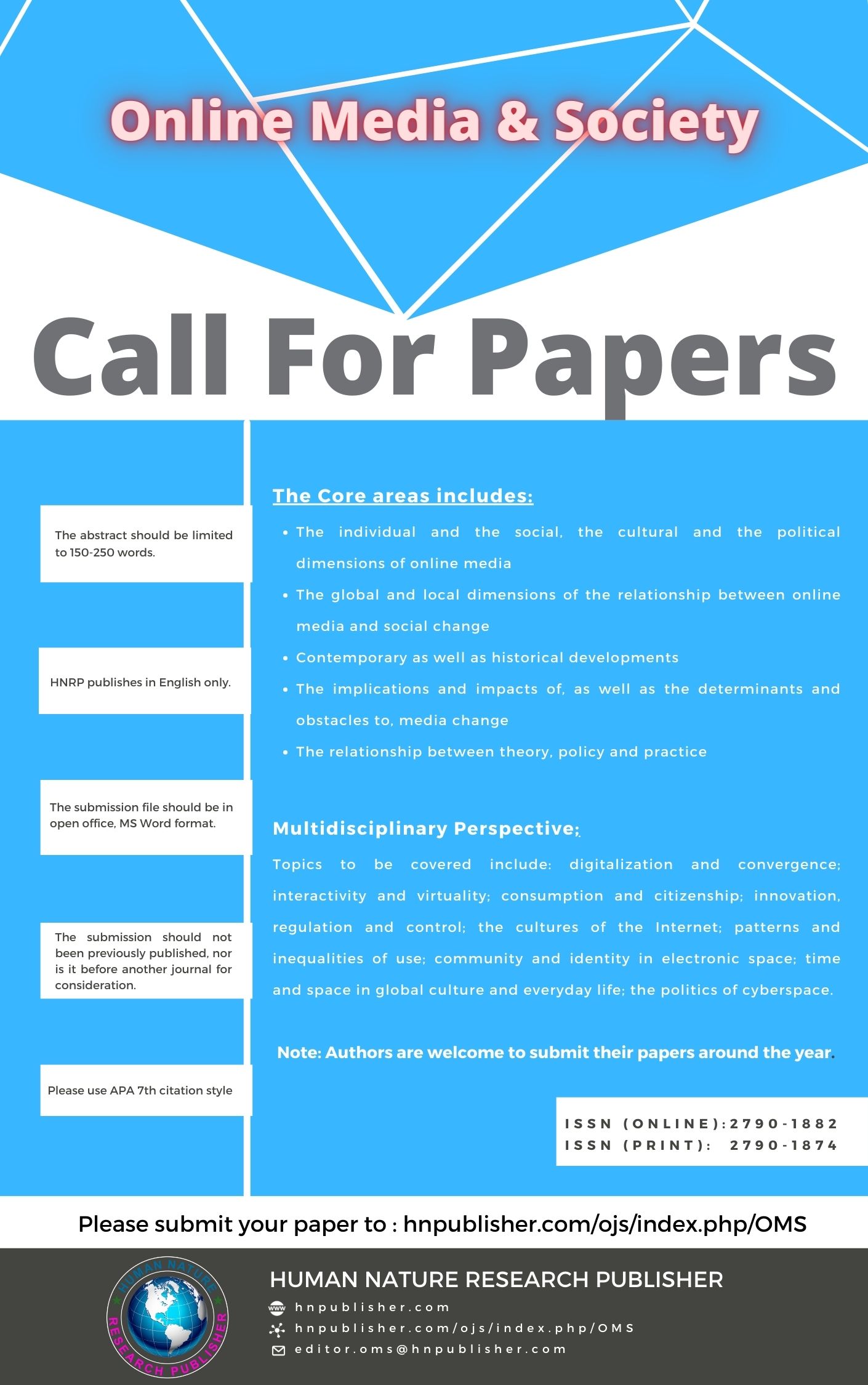Investigating Microcelebrity Practices on YouTube in Pakistan: A Qualitative Analysis
DOI:
https://doi.org/10.71016/oms/ygv09681Keywords:
Microcelebrities, Content Creators, YouTubers, Fame and Attention, Microcelebrity ModelAbstract
Introduction: Since its beginnings, YouTube has transformed from a video-sharing service to a platform where regular individuals may become popular through microcelebrity practices, like conventional media superstars.
Aims and methods: This study seeks to investigate contemporary microcelebrity behaviours on YouTube by using in-depth interviews with microcelebrities on YouTube around Pakistan.
Results: Major findings revealed that YouTube is becoming more popular in Pakistan as more individuals access smartphones and high-speed internet. With no membership fees, more flexibility and room for creation, and the possibility of living a luxurious life and making money, YouTube is attracting more microcelebrities. These microcelebrities emphasized controversial activities such as false fights, copy-pasting material, obscenity, harsh language, and Clickbait as core practices. Key growth factors on YouTube in Pakistan include local language, relevance, consistency, and female producers. Microcelebrities create an authentic image online to be liked, adored, and validated. Regarding popularity, attention, and fan base management, data show that microcelebrities frequently employ viral techniques, appealing thumbnails, and freebies. Creating content on relevant, taboo, controversial themes and using family members as commodities is standard practice to show intimacy.
Conclusion: Thus, it concluded that microcelebrities earn considerable influence and popularity and achieve celebrity status. Since many (micro)celebrities emerged on YouTube worldwide, it is also a prevalent phenomenon in Pakistan.
Downloads
Published
Issue
Section
License
Copyright (c) 2023 Anam Ayub, Dr. Muhammad Ali (Author)

This work is licensed under a Creative Commons Attribution-NonCommercial 4.0 International License.








